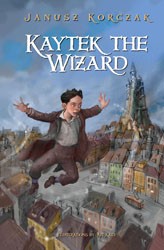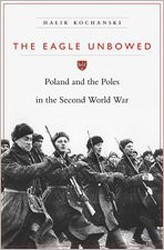For Janusz Korczak, the most celebrated pediatrician of his time, it was always about the children. Born in Warsaw 1878, Korczak lived in a time when prior European values were turned upside down, most dramatically by the Nazis who were ascending to power. But even before the Nazi era, the attitude toward Jewish people in Europe was complicated. Korczak’s real name, Henryk Goldszmit, was changed when his pediatric advice radio show became popular; although Warsaw was a Jewish city at the time, a Jewish name was not an asset.
This accurate, extensively-documented, and well-written record of Holocaust history focuses on child care and the contrasts between child-rearing in Nazi Germany and Korczak’s approach — both in his pre-Holocaust teachings and famed Warsaw Jewish orphanage, Dom Sierot.
Despite having well-off parents, Korczak was raised in emotional poverty. Not allowed to play with other children, he was frequently criticized by both of his parents and felt that adults lacked respect for children. When his father was committed to an insane asylum and took his own life, the family lost all their money and at eighteen years old, Korczak was responsible for supporting his mother and sister. Drawing on his troubled, isolated childhood, he became a pediatrician and championed children’s rights. He was also an educator, a humanitarian, an author, and a visionary. He left a highly successful pediatric practice to become the director of a Jewish orphanage in Warsaw, which later became part of the ghetto. The orphanage famously operated as a democratic republic governed by a children’s parliament which hammered out rules for its administration, including a Court of Peers where each child had an opportunity to serve. This orphanage gave hope to children with troubled lives and taught them the use of tools for building productive futures.
In contrast, Hitler, who also experienced an unpleasant childhood, became a purveyor of hate and destruction. While Korczak treasured children and promoted their rights, Marrin points out that Hitler, on the other hand, saw children as objects to be brutally molded into “beasts of prey,” prevented from experiencing tenderness or developing independent thought. “Hitler believed the young were not precious in themselves, but objects to be molded to serve his ideology,” Marrin writes. The author intentionally leaves the reader wondering how a small dark-haired, academic under-achieving “oddball” managed to conjure up the horror that overwhelmed Europe and almost the world, resulting in millions of torturous deaths.
A significant part of the book spotlights the Warsaw ghetto. Its creation, life within its disheartening walls, the revolt of a handful of under-equipped, malnourished heroic inhabitants, and the ultimate destruction of the entire ghetto are explained in painstaking, well-documented detail. Although the conclusion is well-known, the book also gives rise to a desperate hope that perhaps the end will differ from the one we know from history. Despite the depictions of heart-wrenching inhumanity, daily degradation, and the sadistic torture suffered by Jews and non-Jews, several people shine as examples of daring, decency, and sacrifice. Some among those who inspire hope are mentioned in this book. One who is now remembered as a hero is Irena Sendler, who may be responsible for saving the most Warsaw ghetto child-survivors. A well-born and strongly principled Christian, she was a social worker whose clients were orphaned children. During the Nazi period her efforts were channeled into helping Jews — she and her colleagues are credited with saving 2,500 children. Secular and well-educated, Stefania Wilczyska became the director of general management for Korczak’s Dom Sierot staff. She joined Korczak and the orphans on their last march and perished with them in Treblinka.
Known antisemite Zofia Kossak, a writer who referred to Judaism as a “dismal and grotesque faith,” was outraged by Nazi savagery and organized the Polish underground Council for Aid to Jews, run by Catholics and Jews. Her organization provided forged identity documents, money, and safe houses. Kossak is the only professed antisemite honored by Yad Vashem. These and other courageous human beings are singled out as illuminating the darkness of those days.
Nevertheless, the book ends on a note of pessimism. In an interview, Irena Sendler, who lived until age ninety-eight said, “Humanity has understood nothing. Religious, tribal, national wars continue. The world continues to be a sea of blood.” Despite the reverence in which Korczak is regarded today, the author laments the ongoing world-wide sacrifice of children to the gods of war.
Korczak drafted the Declaration of the Rights of the Child issued by the League of Nations and subsequently reissued by the United Nations. This document negates the concept of eugenics, stating that “children are to be valued for themselves” and should be educated “to develop abilities, individual judgement and (a) sense of moral and social responsibility.” In Treblinka, only one stone monument is engraved with a person’s name. In English, the inscription reads “Janusz Korczak (Henryk Goldszmit) and the children.”
Award-winning journalist and freelance writer, Helen Weiss Pincus, has taught memoir writing and creative writing throughout the NY Metro area to senior citizens and high school students. Her work has been published in The New York Times, The Record, The Jewish Standard, and other publications. She recently added “Bubby” to her job description.



